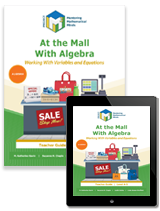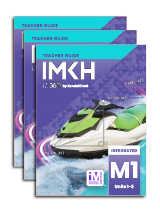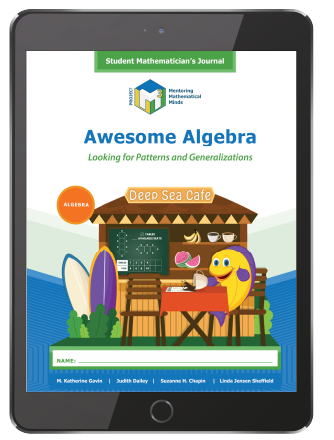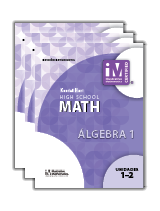Search Listing Name
product:
Project M2 Level 2 Unit 1: Designing a Shape Gallery: Geometry with the Meerkats Student Mathematician Journal 1 Year License
The Student Mathematician’s Journal presents simulated or real-life problems that encourage students to think, write, and read like mathematicians. They are asked to reflect on what they have learned and communicate in writing on worksheets.
In this unit, students explore two- and three-dimensional shapes and the relationships among them. The reasoning and spatial-sense skills they use will help the
product:
Project M3: Level 3-4: Awesome Algebra: Looking for Patterns and Generalizations Student Mathematician's Journal
The Student Mathematician’s Journal allows students to explore simulated or real-life problems and help them to think, write, and read like mathematicians. It encourages students to reflect on what they have learned in each lesson, think deeply about mathematics, and communicate in writing on worksheets.
In this unit, students study patterns and determine how they change, how they can be
product:
Project M2 Level 1 Unit 1: Exploring Shape Games: Geometry with Imi and Zani Student Mathematician Journal
The Student Mathematician’s Journal presents simulated or real-life problems that encourage students to think, write, and read like mathematicians. They are asked to reflect on what they have learned and communicate in writing on worksheets.
In this unit, students explore two-dimensional shapes and in doing so, discover properties of these shapes rather than memorize definitions given to them.

product:
Project M3: Level 4-5: At the Mall With Algebra: Working With Variables and Equations Teacher Guide + 3 Year License
In this unit, students represent and analyze mathematical situations using algebraic symbols, they come to understand the basic notions of equality and equivalent expressions through informal problem-solving. They learn how variables are used to represent change in quantities and also to represent a specific unknown in an equation.
The Teacher Guide is designed to provide background information on the mathematics being taught in this unit, the learning environment, mathematical communication, and differentiated instruction. Also included:

product:
IM v.360: Integrated Math 1 Teacher Guide Set
IM® v.360 9-12 Math is an IM Certified curriculum providing t

product:
Project M3: Level 3-4: Awesome Algebra: Looking for Patterns and Generalizations Student Mathematician's Journal 1 Year License
The Student Mathematician’s Journal allows students to explore simulated or real-life problems and help them to think, write, and read like mathematicians. It encourages students to reflect on what they have learned in each lesson, think deeply about mathematics, and communicate in writing on worksheets.
In this unit, students are encouraged to study patterns and determine how they change, how they can be extended or repeated and/or how they grow. They then move beyond this to organize the information systematically and analyze it to develop generalizatio

product:
Illustrative Mathematics: Algebra I Spanish Student Edition Set
IM Algebra 1 is a problem-based core curricula rooted in content and practice standards to foster learning and achievement for all. Students learn by doing math, solving problems in mathematical and real-world contexts, and constructing arguments using precise language. Teachers can shift their instruction and facilitate student learning with high-leverage routines that guide them in understanding and making connections between concepts and procedures.

